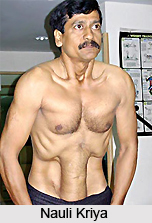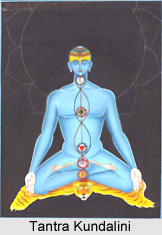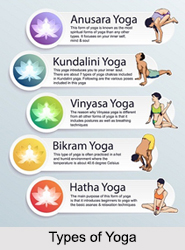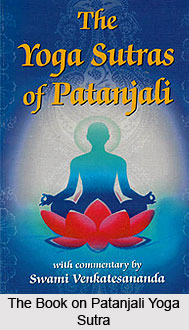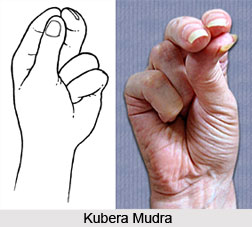Autogenic Training (AT) is one of the most important auto regulatory system for athletes used today. Widely used in Eastern Europe, it involves relaxation and concentration. AT is a method which, when practiced regularly, contributes to the fast recovery of strength and elimination of the symptoms of stress and restlessness. It also eradicates incorrect habits, negative thoughts, and anxiety and allows the athlete to achieve the required properties of successful performance. AT allows the athlete to mobilize and use his or her own natural energy and power in order to achieve a definite objective. Through AT, it is possible to influence both the emotions and the functions of the autogenic nervous system.
The phenomena of mind/body self-regulation exhibited by yogis awakened the curiosity and interest of British physicians more than 200 years ago. Later, the British and other European physicians began to study the mind/body relationship. It was around 1910 that Dr. J. Schultz of Germany began to develop a mind-body training system called Autogenic Training (AT), from hypnosis and yoga, also called self-generated or self-motivated training. Schultz correctly identified some of the effective components of hypnotherapy and yoga and incorporated them into a method of self-regulation. He realized that self-regulation would have to be simple to be effective. Neither hypnosis nor yoga is simple. Hypnosis is especially complex since it requires a psychologist who has developed trust and rapport with the patient. Even then, some individuals resist the process. Schultz therefore drew effective elements from both hypnosis and yoga to create a more practical method than either.
Yoga can be seen in many aspects of Schultz`s method: muscle relaxation (similar to Savasana), the method of concentration (Raja Yoga), body awareness or proprioception (Laya Yoga), repetition of mantra-like auto suggestive phrases (Mantra Yoga) and closing the eyes, reducing external and internal stimulations (Pratyhara). 
Autogenic training optimizes passive attention and helps learning autonomic control through passive attention. In AT you attend passively to certain areas (such as the arms) and speak internally to your body (liMy arms are heavy, my arms are warm"). The muscle tension activity will change in the area where your passive attention was focused. Body control is achieved through passive attention and not active trying, and the important part of the control is the process and the attention to it - not the outcome. AT implies self-control. The student is responsible for his or her own growth and mental state. Hence, there is a change in the source of responsibility it rests with the athlete and no one else.
Schultz`s Classical AT: The classical AT of Schultz has six categories of exercise: muscle, blood vessels, heart, breathing, organs of the stomach, and the head. AT is based on an exact system and consists of the following standard exercises, which are paired with complementary auto suggestive phrases. Classical AT is very slow - commonly 7 to 8 months long. The heaviness exercise is, for instance, practiced one limb at a time, with one week for each limb, and so on through each of the other exercises.
AT for Athletes: For the athlete, the use of AT can have many benefits. AT helps the athlete to calm or activate his/her mental state and to change his/ thoughts, emotions and self-confidence. It can also help them to relax more, and recover more quickly during the competition and practice. With AT, it is possible to learn enhancing new skills and techniques in a sport more rapidly and more easily than before. When applying AT to sports, one must consider the specific or concrete demands of the sport along with the specific problems and personal abilities of the athlete. In other words, AT is both specific and individual specific.
Learning Autogenic Training
Sport-modified AT takes 4 weeks of practice, 3 times daily, for 2-3 minutes. During the first 2 weeks, athletes will do four autogenic exercises.
1. Encouraging feelings of heaviness (heaviness exercise).
2. Encouraging feelings of warmth (warmth exercise).
3. Encouraging feelings of calm and regular breathing (respiration exercise).
4. Encouraging feelings of a strong and quiet heartbeat (cardiac exercise).
These exercises will focus on both arms during the first week and both legs during the second week. During the third week and thereafter, they will practice two additional exercises:
5. Encouraging feelings of warmth in the solar plexus (solar plexus exercise)
6. Encouraging feelings of a cool forehead (forehead exercise)
In addition, they should focus attention on sensations of heaviness and warmth not just in the arms and legs but throughout the entire body as well.
I. Week One: Exercising Both Arms
Choose a quiet, comfortable room in which to practice. Lie on your back (perhaps on a bed or sofa) and assume a comfortable position. You may put a pillow under your head. However, your neck must not have an unnatural bend or be in a stretched position. Place your arms down beside your body. As an alternative, you may practice these exercises in a sitting position.
Preparatory Exercises
Close your eyes and let yourself go. Take 3 deep comfortable breaths. Begin preparing for concentration. To prepare yourself for this state, you must be aware of your quiet tranquility. Repeat in your mind, "I am calm, totally calm." Visualize this calmness in your mind. Concentrate on the image of calmness. Your concentration should be a passive one, rather than the active concentration normally required for reality-oriented tasks. Do not actually try to achieve this state. Instead of trying or striving, just let yourself go into this state. Draw your attention away from action, either past or future. Be aware that you have sufficient time to practice and that you will totally relax. Allow your muscles to relax. Let all your muscles soften. Let them go limp. Slowly repeat in your mind the autogenic phrase, "My whole body is relaxing." Repeat it 2-3 times.
Heaviness Exercise
After experiencing relaxation, let yourself experience the sensation of heaviness. Slowly repeat to yourself, "My arms are relaxed." Repeat it 2-3 times. Then, repeat to yourself, "My arms are heavy, very heavy." Repeat it 3-4 times. Focus your attention on your arms. Feel your arms relaxing and feeling heavier and heavier. Use your imagination to help induce the sensation of heaviness. Remember always to attend passively without striving or trying. Let it happen. Don`t be discouraged if at first the sensation of heaviness is minor, or not felt at all. With practice, the feeling will appear and over time, will become more pronounced.
Warmth Exercise
After practicing heaviness, now focus on feeling the sensation of warmth. Slowly repeat to yourself 3-4 times, "My arms are warm, very warm." Focus your attention by "seeing" your arms and experiencing the sensation of warmth. Use your imagination to induce this feeling. For instance, visualize and feel the warmth of the sun on your skin, or the sensation of warmth in a hot tub or whirlpool or some other familiar source of warmth. Use passive concentration and let it happen. The image and visualization of warmth is accompanied by relaxation of the arteries and capillaries. This means that they enlarge, allowing an increase in blood supply into those areas of the body upon which you are focusing-in this case, the arms. After learning this exercise you will not only have a feeling of warmth, but, as well, the areas where you focus will actually increase in temperature.
Calm Breathing Exercise
After practicing the exercises above, move on to the respiration exercise. Concentrate on the autogenic phrases, "My breath is calm and regular," and "I am breathing easily." Repeat them slowly 4-5 times. This exercise`s goal is easy, regular breathing. Inhale by moving your stomach out-ward and exhale by moving your stomach inward. This quiet breathing will have a pleasant, calming effect on you. When the exercise is well executed, you will find yourself concentrating on your breathing, as you perceive the regularity of your automatic breathing. You will be extremely aware of the quietness of your breath. Anxiety and stress are commonly connected with respiratory irregularities. This exercise is helpful for eliminating the symptoms of stress, and thus for quieting the autonomic system.
Cardiac (Heartbeat) Exercise
Following the respiratory exercise, you should then work on the cardiac exercise. However, anyone suffering from a heart disorder of any kind should engage in this exercise only after consultation with the doctor. After recalling the sensations described above - relaxation, the sensation of heaviness, the sensation of warmth, and the sensation of calm breathing - you should concentrate on the phrase, "My heartbeat is quiet and strong." Repeat this phrase slowly, 5-6 times.
This exercise sets in motion a sequence in which various elements stimulate each other: When your heart has a quiet rhythm, this increases your peace of mind. Peace of mind strengthens relaxation. In turn, relaxation strengthens the quietness of your heart rhythm. You may find that putting your hand over the heart area during the exercise will facilitate heightened awareness of your heartbeat. It will disturb the feelings of relaxation in your arm, but it is only a temporarily maneuver.
Activation Exercises
An AT session always ends with three exercises to return you to the normal waking state: taking a deep breath, opening the eyes, and briskly moving the arms and legs. These exercises are executed as follows: Give yourself (in order) these self-commands: "Deep breath," "Open the eyes," and "Exercise with the arms." Next, repeat these self-suggestion statements to yourself: "Strength is returning to my arms and legs," and" I am feeling fresh and reenergized." Exercising the arms means stretching and flexing the arms, followed by energetic movements.
II. Week Two: Exercising Both Legs
Calmness
Start each AT session with the preparation exercises used during the first week, beginning with, "I am totally calm" and "My whole body is relaxed."
Heaviness Exercise
First, induce the learned sensation of heaviness in your arms. Next, let yourself experience the sensation of heaviness in your legs. Slowly repeat to yourself, "My legs are relaxed." Say it 2-3 times. Then say, "My legs are heavy, very heavy." Say this 3-5 times. Again, use your imagination vividly to help to induce the sensation of heaviness. Focus your attention by visualizing your legs. Feel the heaviness happen, visualize it happening, and let it happen. Remember always to attend passively - without striving or trying.
Warmth Exercise
After practicing heaviness, let yourself experience the sensation of warmth. First, induce the learned sensation of warmth in your arms and legs. Then focus your attention on your legs. Slowly say to yourself two to three times, "My legs are warm, very warm." As before, focus your attention by losing your legs and experiencing the sensation of warmth in your legs. Feel the warmth move from your thighs down toward your knee, calf, foot, and toes. Again, use a vivid image to visualize warmth.
Calm Breathing Exercise
As during the first week, allow yourself to experience the sensation of calm, regular breathing. Use a phrase such as, "My breath is calm and regular." Use the same instructions as for week one.
Cardiac (Heartbeat) Exercise
Use the same procedure as you did during the first week to experience a strong, quiet heartbeat. Silently say this 5-6 times: "My heartbeat is strong and quiet."
Activation Exercises
As during the first week, conclude the exercise session with these phrases: "Open eyes." "Deep breath." "Exercise the arms and legs", "Strength is returning to my arms and legs." "I am feeling fresh and re-energized.
 III. Week Three: Exercising the Whole Body
III. Week Three: Exercising the Whole Body
Calmness
Use the same preparation exercises as those used during the first two weeks. Begin with these statements: "I am totally calm." "My whole body is relaxing."
Heaviness
Repeat 4-5 times, "Both arms and legs are heavy," followed by, "The whole body is heavy." While repeating these statements, visualize and imagine heaviness as perfectly and as vividly as you can.
Warmth
Repeat 4-5 times, "Both arms and legs are warm," and then, "The whole body is warm." Again. use the phrases and visualize warmth as perfectly as possible.
Calm Breathing
Use the same procedure as during the first two weeks.
Cardiac (Heartbeat) Exercise
Use the same procedure as during the first two weeks.
Solar Plexus Warmth
Focus your attention on your solar plexus Oust below the rib cage}. Let yourself experience a feeling of warmth in your solar plexus, perhaps by imagining warm sunlight pouring onto your stomach. Feel the warmth and let it happen. " Say slowly to yourself, four to five times, "Warmth is pouring into the solar plexus. My solar plexus is warm." In your mind, see the warmth spreading from the chest gradually down, warming the whole area, both from within and out. The goal of the solar plexus exercise is to calm and regularize the functioning of the organs in your stomach cavity. It can be very helpful in decreasing your anxiety and can create a pleasant, relaxed, tranquil state.
The Cool Forehead Exercise
Next Focus your attention on your face and forehead. See your forehead and say slowly," My facial muscles are relaxed," about 5-6 times. Later, say," My forehead is pleasantly cool." Imagine a pleasantly cool sensation on your forehead, perhaps a gently wind.
Rules/Guidelines for Practicing AT
1. Try to practice 3 times daily. If you cannot, it is better to practice 2 times a day regularly than to try practicing 4 times a day occasionally.
2. Practice should only last 2 to 3 minutes, even if the desired effects do not occur. Longer practice can be counterproductive, leading to increased tension.
3. Try to develop a daily practice rhythm. Pick a time of day that works best, and practice at that same time each day.
4. You can practice AT by both lying and sitting positions. The desired effects often occur more quickly in a prone position. However, you may be forced at times to practice in a sitting position (for example, at a competition). Therefore, you can alternate between the lying and sitting positions when you practice. In both cases, the position must be comfortable so that the whole body is able to relax. In the lying position, the feet are slightly apart with the toes slightly turned out. The arms are beside the body, slightly bent at the elbows.
5. The sitting position has several variations, depending primarily upon the chair. It can be more difficult to avoid muscle tension in a sitting position. Therefore, attention to the position is important. If possible, support your back comfortably against the chair. Legs are slightly apart, toes slightly turned out, and feet are flat on the floor. If the chair is too high and your feet do not touch the floor, put a pillow or blanket under the feet for support.
7. If the chair has armrests, place your forearms on the supports with your hands hanging freely over the front of the rests. If the chair has no arm support, place your forearms on your thighs. Your arms should not be touching each other. Of course, your comfort is foremost, and if a variation in the above position is necessary, feel free to go ahead with it.
8. AT should always terminate with activation exercises, even during the times that the desired sensations do not occur.
9. A systematic recording of all AT exercises should be done. Keep track of the frequency of practice, progress occurring over time, specific sensations that occur each session, and manifestations that occur as a result of your practice, such as a general sense of well-being or improvement in your sport. This information is vital if you have the opportunity to consult with a specialist in AT.
10. An alternative guideline can be used to continue executing each exercise until the desired result has been obtained on two consecutive days. For some, this may occur either earlier or later than the suggested time limits.
11. In cases of illness, AT should not be practiced. Illness can disturb the practice and negatively influence the results.
12. End each exercise session with these energetic inner commands: "Deep breath," "Open eyes," and "Exercise the arms." Then sit or stand up and make energetic movements with your arms to get rid of the heaviness. When practicing in bed before going to sleep, the relaxation need not be disturbed by this command.
13. During competition and practice, you must quickly come back to an alert state. This means ridding yourself of drowsiness and the sensation of heaviness. You need to learn to make the whole process automatic so that you can quickly get back to your best level and continue your performance. Also remember, however, to be patient - you must practice the procedures consistently, but without forcing them.
14. During AT you will experience a number of physical sensations: limb heaviness and warmth, warmth in the epigastric (stomach) region, a drowsy state, and sensations of heaviness or floating when you shift to a calm state- (this is known as parasympathetic dominance). At first you may not see progress in inducing these sensations. Sometimes there is an increase in excitation and tension while learning the techniques. Gradually your progress will accelerate. Relaxation will become deeper, visualization will be clearer, and bodily sensations will become more calming.
15. You can concentrate on auto suggestive phrases using two methods. You should learn and use both techniques. The first consists of mechanically repeating the auto suggestive phrase in your mind. The second method involves imagining or visualizing attributes of the desired state as fully as possible. For instance, if you are attempting a heaviness exercise, you could imagine the qualities of heaviness with as much vividness as you can. Imagine the effort it takes to move a heavy tree limb. Imagine the limb pressing down on the couch or floor you are lying on and picture its magnitude and weightiness.




